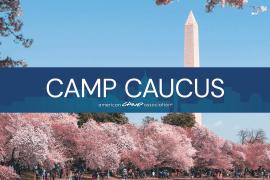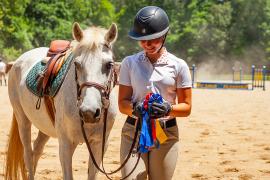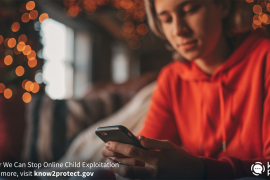ACA recently spoke with Roger Rennekamp, PhD, extension health director of Cooperative Extension/ECOP, about some of 4-H’s considerations in pivoting to online/virtual programming.
4‑H is America’s largest youth development organization — empowering nearly six million young people spread across every county in the US with leadership and other skills. 4‑H is delivered by Cooperative Extension, a community of more than 100 public universities across the nation that provides experiences through which young people learn by doing. 4‑H actively engages young people of all beliefs and backgrounds, encouraging them to express who they are and how they make their lives and communities better. Programs are delivered by 3,500 4‑H professionals and 500,000 volunteers through school and community clubs, in-school and after-school programs, and 4‑H camps.
As a like-minded youth-serving organization, ACA wanted to share some of their insights about the important elements of online/virtual programming for kids.
What were your initial considerations in pivoting to virtual 4-H programs?
We began this work in late February and March. Our network and county programs had an entire summer of learning experiences, activities, and competitions lined up. The first consideration was how we were going to make sure those still happened, if possible. The second consideration ended up being how we would make sure that we continue to offer learning experiences for these kids, not just activities. Meaning how were we going to do the things we would have done in a small group online, and how would we convert some of our flat publications and PDFs to programs? The third consideration was the key social-emotional impacts that we know are essential for positive growth in young people — the interaction with peers and meaningful adults. Kids have essentially been stripped of their teachers, their coaches, and their peers. Some kids are meeting their peer needs through online games, but we are trying to learn what innovations are happening in the field right now to make sure those positive online experiences continue beyond just game playing.
How did you choose your online platform, and have you encountered any challenges with that?
Our network of county offices (3,142 offices) was already widely using Zoom. For example, our in-service education folks and most of our meetings were over Zoom. So that was a quick-and-easy way of doing things because our people were already familiar with it.
One of the challenges we encountered, even in some of the extension offices, was that some individuals didn’t have access to broadband — a lot of kids don’t have access either. A number of county offices purchased signal extenders so people could come to an office’s parking lot to use the internet.
Also, because many 4-H programs are connected to land grant universities and all the universities have adopted something for their online programming, 4-H has been able to utilize other online learning platforms. Convenient access has helped determine what county programs went with.
Has staff training changed for virtual programs?
We built a learning community on Cooperative Extension for people to share and learn and work remotely. A lot of training has been offered for staff around how to connect with peers, effectively work remotely, and engage with clients and volunteers.
What measures have you taken to ensure your online 4-H participants are safe?
Even before online programming, we have always done, and continue to do, criminal history checks on all our volunteers. For Zoom programs we require passwords to get in. And for any Facebook pages and online posting activity, we have staff monitoring that.
What elements of your program did you want to ensure you kept, and how did you make sure to incorporate the 4-H mission into your virtual programs?
We know an awful lot about adverse childhood experiences (ACES) and the long-term effect of significant events in kids’ lives. In a lot of ways, this COVID-19 experience is going to have the same impact for some kids that we saw with the Vietnam War and 9/11. We’re really concerned about mitigating those long-term effects. I personally am not as worried about the academic pieces, because kids can certainly make those up — but it’s those other things that put social and emotional scars on kids. I don’t mean to minimize the learning loss, but it’s a long time for kids to be living in fear and ambiguity. Even though [stemming the learning loss] is what we started out with, we’re realizing the social-emotional impact (it’s almost like PTSD) is going to be significant.
So along those lines, what advice would you offer camps and other youth-serving organizations that are just beginning to pivot to online programs?
Don’t just focus on delivery of content and the academic side of things. Build in opportunities for volunteers and staff to connect directly with the kids to see how they’re doing and to focus on their social-emotional development. Make sure you maintain connections with peers and meaningful adults in the process.
What do you think is going well with your online/virtual programming so far?
One of the things that is unique about us is we are not facility based — many facility-based programs have had to lay off or furlough staff — and we’re very fortunate to have all our staff still on board. They have really stepped up quickly to say, “We need to figure out how we’re going to keep our events going.” They’re working as hard as ever and really being innovative and creative. I’m really proud of our folks in the field.
For more information on 4-H and available online/virtual programming, visit 4-H.org.
The views and opinions expressed by contributors are their own and do not necessarily reflect the views of the American Camp Association or ACA employees.



